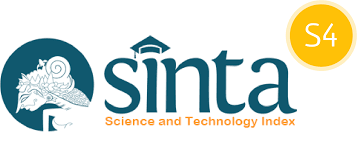Keanekaragaman Serangga pada Tanaman Cabai Merah Di Desa Kubangwungu Kecamatan Ketanggungan Kabupaten Brebes
Abstract
Meningkatnya jumlah penduduk dan makin berkembangnya industry makanan yang membutuhkan bahan baku cabai merah menyebabkan kenaikan kebutuhan cabai merah. Penelitian dilakukan menggunakan metode survai yang dilakukan dari Bulan Februari 2021 sampai April 2021. Pengambilan sampel keanekaragaman serangga dilakukan pada lahan tanaman cabai merah seluas 1.000 m2. Lahan tanaman cabai merah tersebut ditentukan 10 titik secara acak. Setiap titik pengambilan sampel terdiri dari 2 pitfall trap, 1 light trap, dan 1 jaring serangga dengan 4 kali ulangan. Pengambilan sample serangga dilakukan pada saat tanaman cabai mulai memasuki masa generatif (waktu pembentukan dan perkembangan kuncup kuncup bunga 44-50 hari setelah tanam) selama 6 hari berturut-turut, pada fase ini hama serangga mulai terlihat banyak pada tanaman cabai. Analisis data keanekaragaman serangga dilakukan dengan menghitung indeks keanekaragaman (diversitas) menggunakan Indeks Shanon-Winner dan Indeks Shanon-Evenness. Hasil penelitian didapatkan sebanyak 28 spesies yang terdiri dari ordo hemiptera, coleopteran, prthoptera, diptera, hymenoptera, odonata, mantodea, dan Lepidoptera. Hasil penelitian menunjukkan bahwa indeks keanekaragaman serangga penyerbuk pada lahan pertanian cabai merah dengan metode pit fall (H´=2,874) lebih rendah daripada metode light (H’=3,029) dan jarring (H’=3,0159), sedangkan indeks kemerataan pada lahan pertanian cabai merah metode pit fall (E=0,8627) lebih rendah daripada metode light (E=0,909) dan jarring (E=0,9481).
Kata kunci: keanekaragaman, serangga, cabai merah.
References
Altieri, M.A. & Nicholls, C.I. 2004. Biodiversity and Pest Management in Agroecosystems. Second Edition. Food Products Press. Binghamton (NY)
Donald, J. & Borror. 1992. Pengenalan Pelajaran Serangga Edisi Keenam. Universitas Gadjah Mada: Jogjakarta, 1992.
Las, H., Syahbuddin, E., Surmaini & Fagi, A.M. 2008. Iklim dan tanaman padi: Tantangan dan Peluang. Dalam Buku Padi: Inovasi Teknologi dan Ketahanan Pangan. Balai Besar Penelitian Tanaman Padi Sukamandi, Subang.
Magurran, A.E. 1988. Ecological diversity and its measurement. Princeton University Press, Princeton.
Notoatmodjo, S. 2002. Metodologi penelitian kesehatan. Rineka Cipta, Jakarta.
Sumarni, A. & Muharam, A. 2005. Budidaya tanaman cabai merah. Balai Penelitian Tanaman Sayuran.
Wien, H.C. 1997. The Physiology of Vegetable Crops. Cab. International, New York.
Yuliani, D., Sastranegara, M.H. 2015. Hubungan antara Perubahan Suhu Udara
Harian, Perilaku Petani dan Keankeragaman Serangga Penyerbuk di Desa Serang Kecamatan Karangreja, Kabupaten Purbalingga Jawa Tengah. Jurnal
Biospecies, 8(2), pp. 61-66.














_copy.png)



